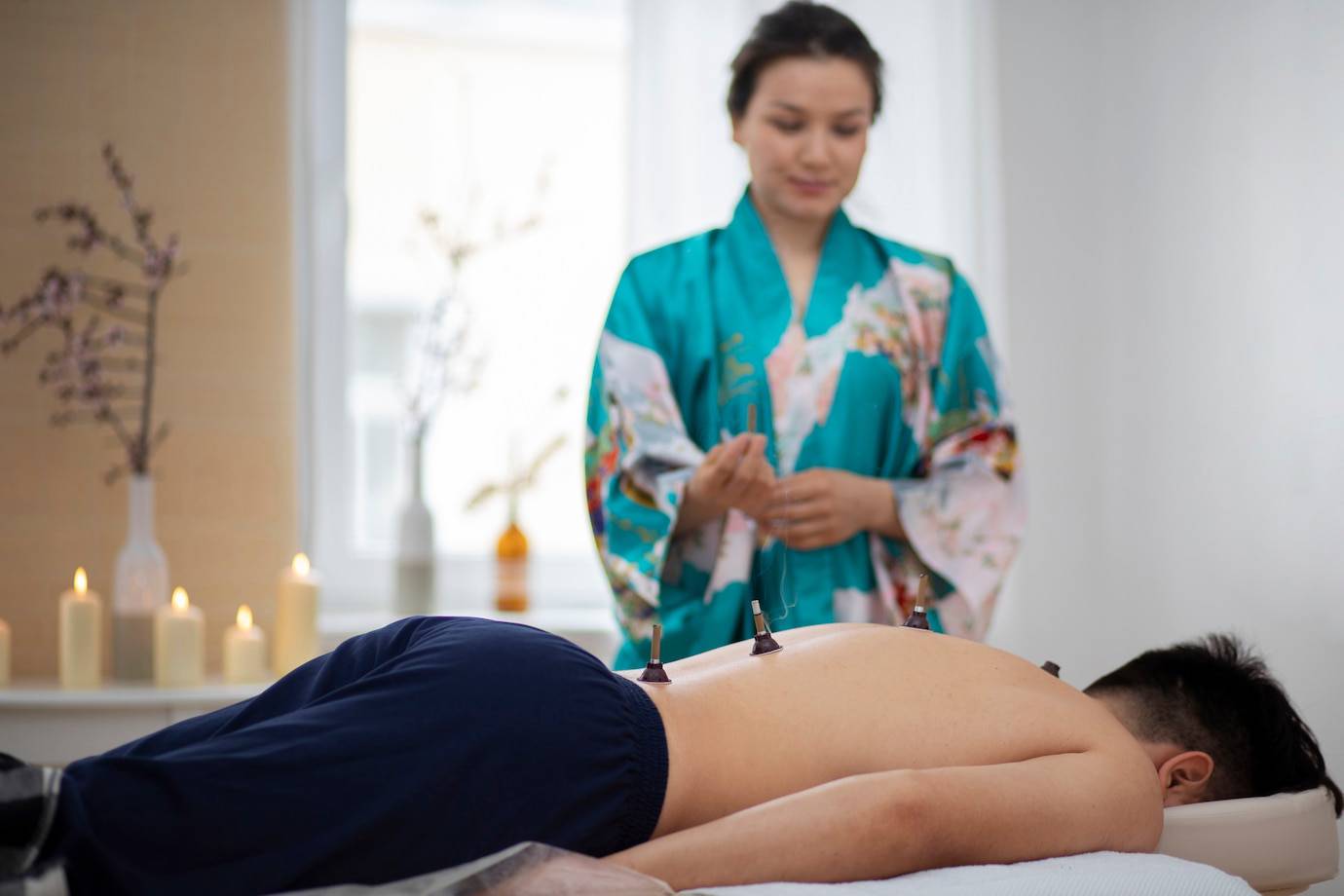
Ancient Chinese Healing Techniques Still Relevant Today
In an era where wellness trends seem to come and go, some healing systems have stood the test of time. Traditional Chinese medicine (TCM) is one such tradition — a holistic approach that’s been refined over thousands of years. From acupuncture to herbal remedies and energy-based therapies, these ancient healing methods are still widely practised and gaining popularity across the globe.
What makes these holistic practices so enduring? The answer is in their core philosophy: balance, prevention, and addressing the root cause, not just the symptoms. This article explores TCM’s key principles and main techniques. It also shows how TCM blends with today’s wellness routines.
If you’re curious about acupuncture or looking for natural ways to ease stress, fatigue, or digestion, you’ll see why ancient Chinese healing matters. It’s not just an alternative; it’s backed by evidence and still relevant today.
Foundations of Traditional Chinese Medicine
Qi: The Energy That Sustains Life
At the core of TCM lies Qi (pronounced “chee”) — the vital life force that flows through your body. When your Qi is balanced, you feel energised, healthy, and emotionally centred. But when it’s blocked or depleted, you might experience illness, fatigue, or mental fog.
Practices like acupuncture, qigong, and herbal medicine aim to restore the smooth flow of Qi throughout the body.
The Yin-Yang Principle
Health in Chinese medicine focuses on keeping Yin and Yang in balance. These forces are opposites, but also work together. Yin represents coolness, rest, and introspection; Yang symbolises heat, activity, and outward movement.
Too much or too little of either leads to imbalance. For example:
- Excess Yang: inflammation, irritability, insomnia
- Excess Yin: sluggish digestion, fatigue, depression
The Five Elements
TCM categorises health and disease through five elements — Wood, Fire, Earth, Metal, and Water. Each element corresponds to specific organs, emotions, and seasons.
For example:
- Wood: Liver, anger, spring
- Fire: Heart, joy, summer
- Earth: Spleen, worry, late summer
- Metal: Lungs, grief, autumn
- Water: Kidneys, fear, winter
Knowing these connections helps practitioners diagnose and treat symptoms as well as emotional and seasonal patterns.
Key Techniques Still Used in Today’s Wellness World

1. Acupuncture: Unlocking the Body’s Healing Response
Acupuncture is a well-known part of Chinese medicine. It uses very fine needles inserted into certain points on the body. This helps stimulate energy flow and promote healing.
Commonly used for:
- Chronic pain (back, joints, migraines)
- Anxiety and stress
- Digestive issues
- Hormonal balance
Research shows it can reduce inflammation, improve blood flow, and trigger endorphin release.
2. Chinese Herbal Medicine: Nature’s Apothecary
Chinese herbalism uses thousands of medicinal plants, often blended into customised formulas. Herbs are grouped by their energy types: cooling, warming, drying, and moistening. They also target specific organs.
Examples include:
- Ginseng: Energy, immunity, stamina
- Liquorice root: Soothing the lungs and digestive tract
- Astragalus: Strengthening Qi and fighting fatigue
TCM practitioners carefully tailor herbal prescriptions to the individual’s constitution and condition.
3. Cupping Therapy: Moving Stagnant Qi
Cupping uses suction to draw the skin upward using heated glass or silicone cups. It’s popular for treating muscle stiffness, inflammation, and lymphatic stagnation.
You may recall the signature circular marks from Olympic athletes — a sign of improved circulation, not bruising.
4. Moxibustion: Warming the Energy Channels
Moxibustion involves burning dried mugwort (Artemisia vulgaris) over acupuncture points to warm and invigorate Qi. It’s often used in:
- Cold-related conditions (arthritis, fatigue)
- Digestive issues
- Strengthening immunity
5. Qigong and Tai Chi: Moving Meditation
These gentle movement practices are cornerstones of preventive health in TCM. They combine breathwork, movement, and visualisation to balance energy.
Benefits include:
- Enhancing flexibility and balance
- Calming the nervous system
- Supporting cardiovascular health
These practices are often incorporated into holistic routines alongside yoga, sound healing, or journaling. Read How to Use Journaling for Emotional Healing .
Relevance in Modern Wellness
Natural Solutions for Chronic Conditions
People today face chronic issues like:
- Anxiety and insomnia
- IBS and poor digestion
- Hormonal imbalance
- Fatigue and burnout
Rather than suppressing symptoms, TCM seeks to rebalance the whole system. Acupuncture, herbal therapy, and lifestyle guidance help restore equilibrium.
Personalised, Preventive Approach
Unlike a one-size-fits-all model, TCM emphasises that individual constitution, age, lifestyle, emotions, and seasonal cycles all influence your treatment. Prevention is key.
For example:
- Someone with “dampness” might be advised to avoid dairy or cold foods
- A person with “heat” may benefit from cooling herbs and stress reduction
It’s about understanding your unique terrain, not just treating what’s trending.
Integration With Western Medicine
Today, many hospitals and wellness centres blend TCM with biomedicine. In the UK and the US, acupuncture is offered for:
- Fertility treatments
- Chemotherapy side effects
- Chronic pain management
The World Health Organisation (WHO) recognises TCM as a valid health system. Clinical trials continue to validate its efficacy and safety.
The Emotional and Spiritual Dimensions

Treating Emotions as Energy
TCM doesn’t separate emotional from physical health. Each organ is linked to an emotion:
- Liver: Anger
- Heart: Joy
- Lungs: Grief
- Kidneys: Fear
- Spleen: Worry
By balancing organ systems, you also regulate your mood. Practices like qigong, breathwork, and moxibustion are often used for emotional release.
This is echoed in other traditions like Chakra Balancing Techniques for Emotional Well-being , offering a layered approach to mental wellness.
Seasonal Living and Mindfulness
TCM encourages aligning your habits with the seasons:
- Eat warming foods in winter
- Rest more during the cold months
- Detoxify and lighten up in spring
This helps attune your body to nature’s rhythms — a powerful antidote to the rush of modern life.
Real Stories: Healing Beyond the Surface
Emma’s Journey With Acupuncture
Struggling with endometriosis, Emma turned to acupuncture after exhausting medical options. Within months, her pain lessened, and her cycles regulated.
“It wasn’t just my womb that healed. I felt calmer, more connected, and in charge of my body.”
James Finds Peace Through Qigong
Burnt out from a corporate job, James began practising qigong in the park with a local group. Over time, his anxiety eased, and his sleep improved.
“There’s something about slow movement and breath that brings you back to yourself. I never knew stillness could be so powerful.”
Starting Your Own Exploration
Tips for Beginners
- Start small — try an acupuncture session or herbal tea blend.
- Work with qualified practitioners trained in TCM.
- Track your progress in a wellness journal.
- Embrace patience — TCM focuses on long-term balance, not instant fixes.
Cultural Respect and Safety
As TCM becomes more mainstream, it’s important to:
- Avoid diluting or misusing sacred practices
- Credit Chinese wisdom traditions
- Support authentic educators and herbalists
When in doubt, seek knowledge from respected sources and honour the lineage behind these tools.
Conclusion: Timeless Tools for Modern Wellness

Traditional Chinese medicine is not just an old practice. It is a vibrant healing system that matters now. Its gentle techniques show us that health isn’t just about not being sick. It’s also about balance, flow, and connection.
If you like acupuncture, are curious about herbs, or want to live with the seasons, TCM offers a caring and helpful guide.
Inspired to explore? Book a session with a certified acupuncturist. You can also add warming ginger tea to your morning routine. Listen to your body. Honour your emotions. And consider how ancient wisdom might just be the missing piece in your wellness puzzle.
Tried any Chinese healing techniques? Share your journey in the comments below — let’s grow in balance together.


